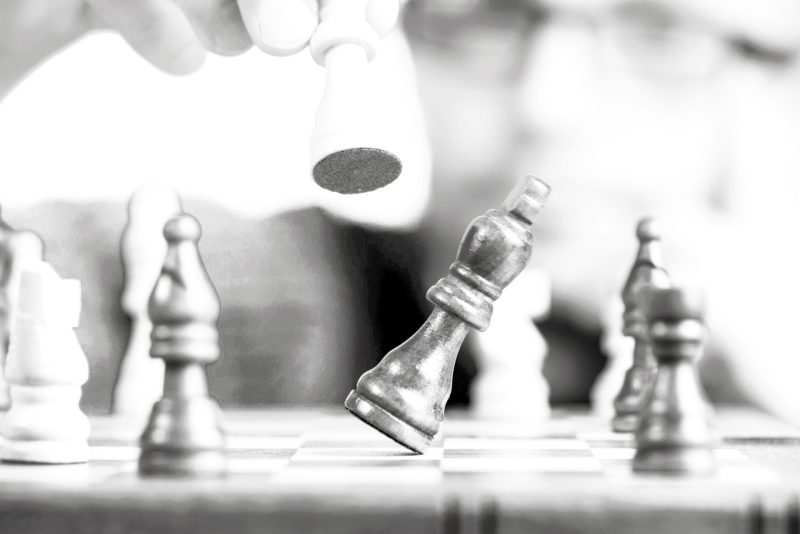Aristotle said that it is the mark of an educated mind to be able to entertain without accepting. Imagine you want to purchase a new phone. You make a decision based on the marketing tactics of a seller without giving thought and evaluation of the product’s features, utility, limitations, and reviews. What will be the most likely outcome of the situation? Eventually, you may end up buying a product that is not cost-effective and doesn’t satisfy your needs.
At this moment, critical thinking is crucial. Implementing critical thinking skills means you research the product before buying, adopting an analytical approach to decision-making.
Still not sure how you can master the art of critical thinking? This article will explore the importance and practical techniques to develop critical thinking skills.
What is critical thinking?
Critical thinking is a process divided into several actions to reach a target goal, such as analyzing and evaluating available information, identifying cognitive biases, and exploring different options to find the best solution to your problem.
Mastering critical thinking skills requires various cognitive skills, including analyzing and interpreting data and applying problem-solving and decision-making.
To be a critical thinker, you need to have particular characteristics, such as open-mindedness, curiosity to explore, creativity, detail-oriented, and consideration towards others’ opinions.
Importance of developing critical thinking
Developing critical thinking skills has received massive attention due to the demanding, complex, and dynamic nature of the contemporary world. Critical thinking is considered a valuable competency in day-to-day life, educational, and professional domains.
For students
When students find it challenging to achieve their learning goals in a classroom setting, one of the common reasons is the inability to apply critical thinking skills. According to teachers, this type of thinking involves reasoning which enables the students to think and analyze the information accordingly, improving their learning outcomes.
A study revealed that critical thinking skills, such as creativity, communication, analysis, problem-solving, reasoning, and decision-making positively influence students’ ability to write compositions.
Additionally, teachers’ intellectual skills, including critical, creative, and analytical thinking, judgment, and problem-solving allow them to monitor and evaluate the performance of students effectively.
For nurses
According to a study, the use of critical thinking skills by nursing students enables them to assess and evaluate problems from various perspectives, including problem formulation, the effectiveness of used methods, evidence quality, treatment validity, and relevance of theories applied. It helps nurses to confront the challenges related to health care, such as those produced by the COVID-19 pandemic.
For businesses
Businesses are struggling due to globalization, technological advancements, and economic unpredictability. However, research reveals that critical thinking in micro-, small-, and medium-sized enterprises assist employees and managers in analyzing workplace issues, collecting data, sharing and discussing various ideas, and designing effective strategies to resolve problems accordingly. Critical thinking, in addition to innovation, also influences performance and increases profit and financial viability.
For the educational sector
Educational sectors are working on improving learning, such as cognitive learning in students. Cognitive learning encourages students to acquire knowledge and skills by utilizing their mental processes and cognitive abilities. A study in 2019 found that critical and creative thinking are the two types of thinking skills that contribute over 70% to the outcomes of cognitive learning.
Steps to develop critical thinking
There are six steps to developing and mastering critical thinking skills.
Identifying the problem
First, identify the problem that requires the best solution. It is important to define your problem and think of questions related to it before moving to the next steps. These two aspects will provide a direction to your problem. Here’s a list of questions you may ask yourself:
- What are the factors that gave rise to the problem?
- What populations are affected by it?
- Why is it important to solve this problem?
This step might be challenging due to the interference of cognitive biases. There are many cognitive biases and some of the common ones are availability, overconfidence, hindsight, confirmation bias, etc. Before proceeding with the critical thinking process, it’s crucial for individuals to acknowledge and understand their biases.
Collecting data
Next, collect relevant data from various sources through research. The data may include research, case studies, statistics, experts’ opinions, etc. To verify the credibility of collected data, it is advised to consider different sources. Ensure that you have adequate data to reach a decision.
Analyzing and evaluating the data
After gathering information from different sources, break down the data into components, discover connections between them, and analyze it according to related pieces.
In addition to it, evaluate the relevance, accuracy, reliability, and validity of analyzed information. Explore what details are essential to consider for solving your problem while eliminating irrelevant data.
Identifying the best possible solution
Use analyzed and evaluated information to generate numerous solutions. During the exploration of solutions, you might come across more than one solution to a particular problem. In this case, you need to be careful when identifying the best solution. One of the ways is to review prior steps of the critical thinking process and evaluate the strengths and weaknesses. Choose the best solution to your problem based on its effectiveness.
Implementing the solution
Execute your selected solution and monitor the outcomes if any adjustments to your approach are necessary. Depending on the problem, there is a probability of putting one solution into action before implementing another.
Analyzing decisions
It’s best practice to analyze your implemented decisions and evaluate their effectiveness. As critical thinkers, here’s a list of questions you may ask yourself to examine your decision-making process:
- Are there any cognitive biases that may have affected my decision?
- Was my decision based on evidence?
- What are the positive and negative consequences of my decision?
Through analysis of decisions, you can learn from prior mistakes and achievements to improve the decision-making process.
In conclusion
Critical thinking is a key skill involving analysis, evaluation, and interpretation of information to make rational conclusions. By applying the six steps, one can develop critical thinking by improving their ability to deal with complex issues, thinking logically and creatively, and developing evidence-based decisions. Through practice, you can become an experienced critical thinker and apply the skills to every aspect of your life.
If you would like to know more about thinking tools and skills, check out the Personal Science Labs. The lab uses the research of the Institute for Life Management Science to produce courses, certifications, podcasts, videos, and other tools. Visit the Personal Science Labs today.
Photo by Pixabay on Pexels


